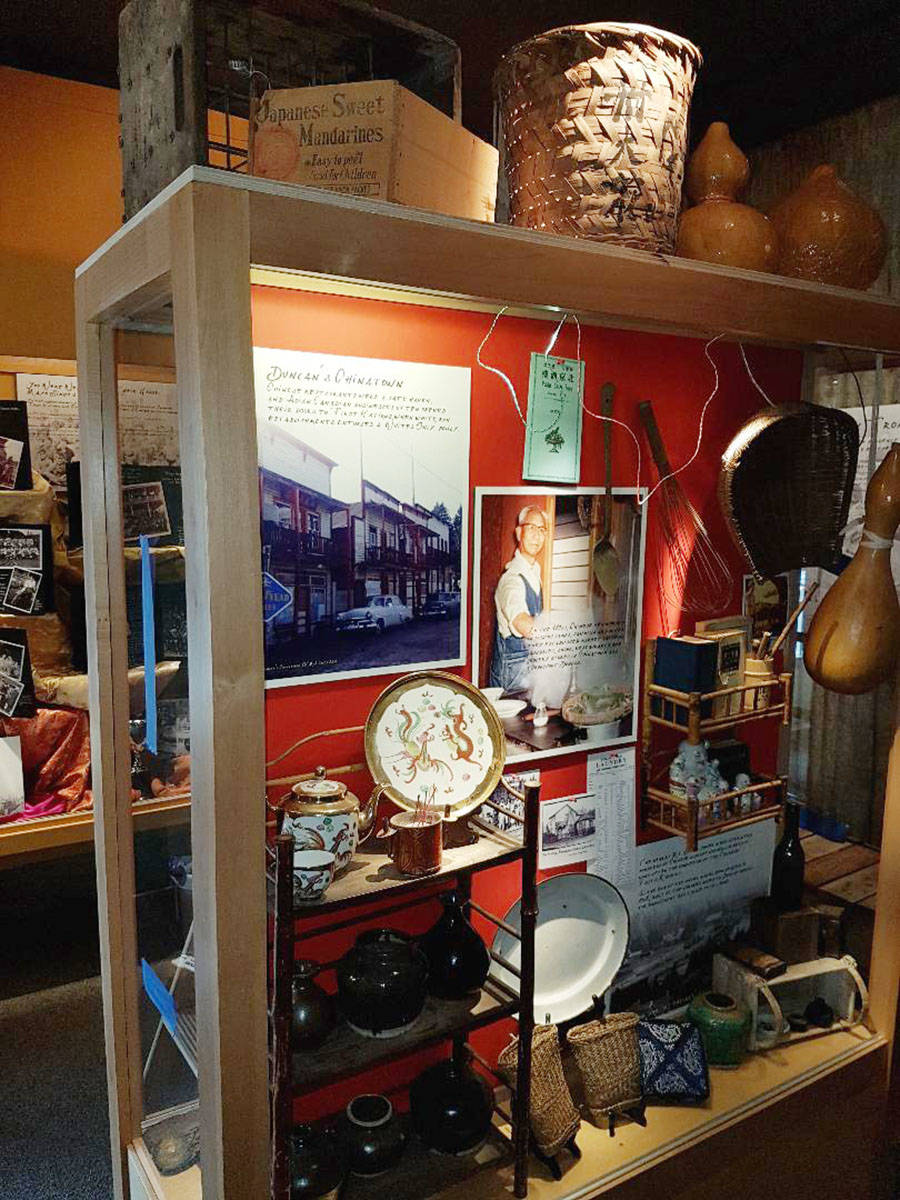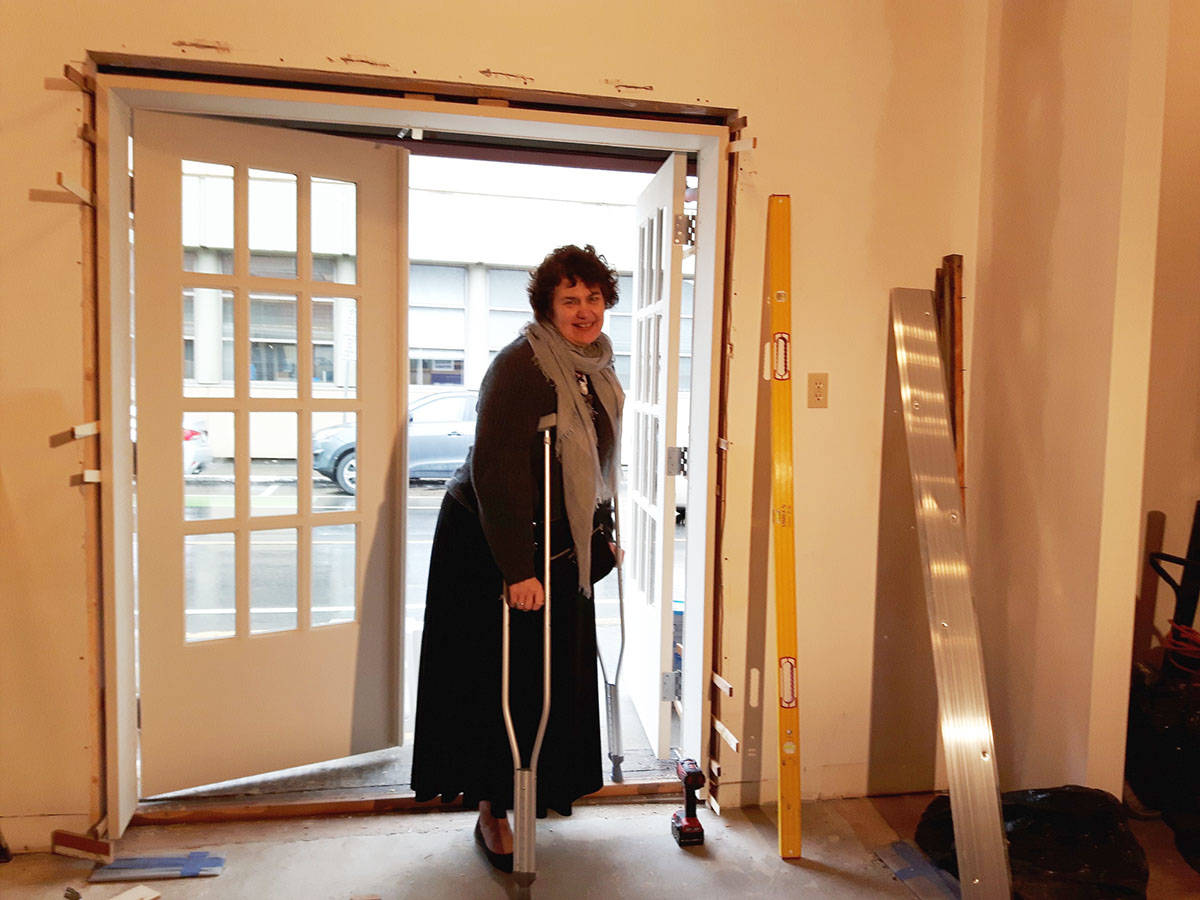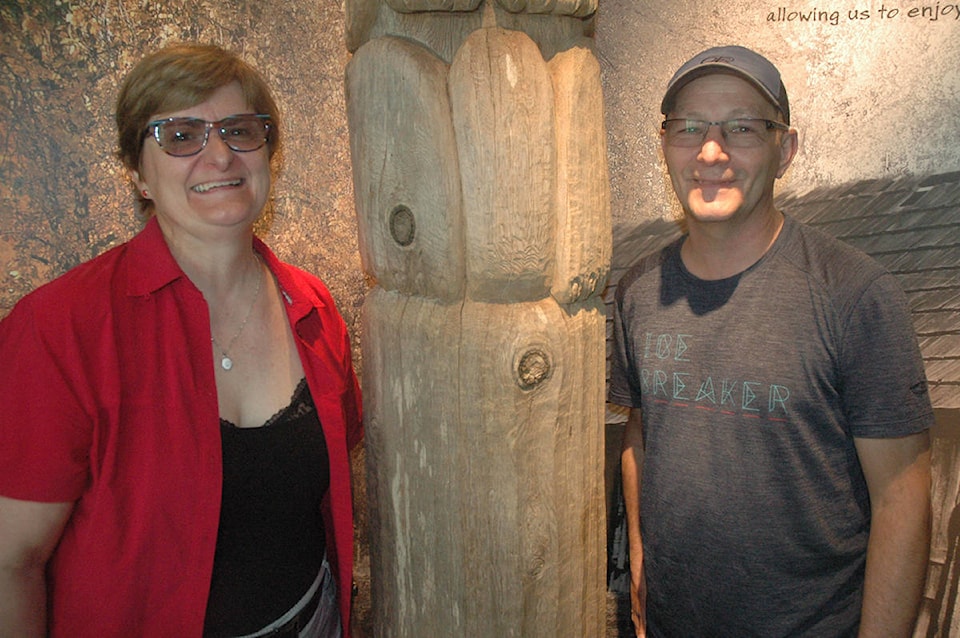By Kathryn Gagnon
The Cowichan Valley Museum & Archives has undergone a dramatic transformation thanks to an $81,000 Canada 150 grant and you can now get a look at the changes.
In addition to this funding for the celebration of Canada’s sesquicentennial birthday in 2017, the project received community support from local businesses, governments and organizations. On Wednesday, May 16 at 11 a.m. the museum opened its doors to welcome visitors once again.
“The renovation has given us an opportunity to offer fresh interpretation of our exhibits and improve the visitor experience to better meet changing needs and expectations,” said Museum Curator and Manager Kathryn Gagnon. “An attractive new entrance through new double doors, designed in the architectural style of the train station by Wescon Doors, enhances the street presence of the museum and provides better access for people with mobility challenges.”
The Canada 150 Project’s title, Many Families in One House: Diverse communities in the Cowichan Valley, is the result of a decade of collaborations with community members who were previously underrepresented.
Their stories are featured in a permanent Asian Canadian gallery and an enhanced First Nations gallery, in which the museum continues to promote the preservation the Hul’q’umi’num’ language.
Do You Remember Me?, a short video about Asian Canadian communities in the Cowichan Valley, was developed by André & Associates, Langara College intern Alexandra Sia, and the museum. The video introduces visitors to the often-difficult history of Asian Canadians, including Mayo Singh’s logging town of Paldi, Duncan’s Chinatown, the uprooting of people of Japanese ancestry from the Cowichan Valley, and the story of the Cowichan Intercultural Society. The new galleries provide an excellent springboard for developing and delivering school programming in response to the new K-12 curriculum, with its focus on inclusion of previously ignored voices.
“Reaching out to communities for their stories, enthusiasm, and expertise has been a gift that keeps on giving. Collaborations with communities helps us to present the most authentic and relevant stories possible. A lasting legacy of the Canada 150 project is witnessing descendants recognize their families, themselves, their language and culture in our exhibits,” said Gagnon.
The museum sends special thanks to Canada 150, André & Associates Interpretation and Design, Live Edge Design, Wescon Doors, the Duncan Business Improvement Association, Michael Seiler Construction, Parks Canada, the City of Duncan, Library and Archives Canada, Judy Hill, Cim MacDonald, Valley Carpet One Floor & Home, Mark’s Instant Signs, Dobson’s Paint & Decorating, Project Manager Tony Irwin, and the many volunteers who helped to bring this transformation to fruition.
The Cowichan Valley Museum & Archives is owned and operated by the Cowichan Historical Society, a not for profit organization. Membership in the Society supports the activities of the museum and archives. Become a member for $20 and contribute to the ongoing efforts to preserve and share the history of the many communities of the Cowichan Valley. Memberships can be purchased at the museum. The museum is located in the heritage designated Duncan Train Station on Canada Avenue. Hours: May 16 to June 16 – Wednesday to Friday 11 a.m.-4 p.m. and Saturday 1-4 p.m.; June 25 to Sept. 14 — open every day, 10 a.m.-4 p.m.. Contact Gagnon at cvmuseum.archives@shaw.ca or 250-746-6612 for more information.


